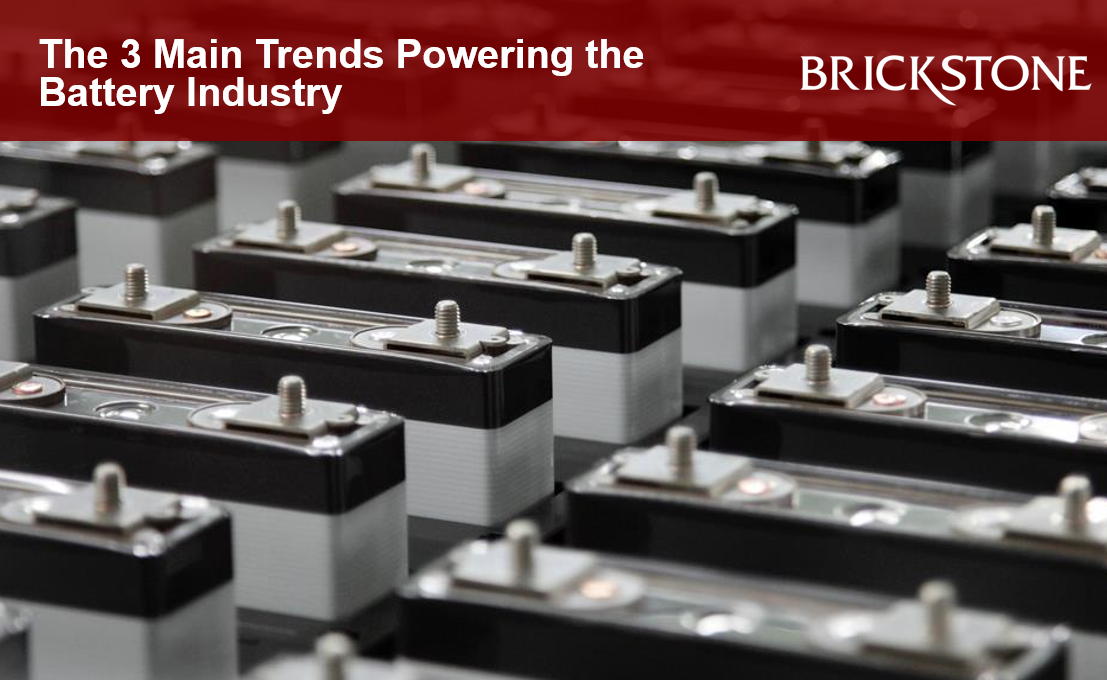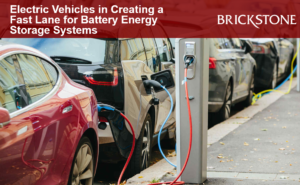Energy Storage: The 3 Main Trends Powering the Battery Industry
The global battery energy storage system market is expected to grow from USD 4.4 billion in 2022 to USD 14.1 billion by 2027, at a CAGR of 27.9%. According to MarketsandMarkets, the growth of the market is attributed to the increasing demand for grid energy storage systems owing to ongoing grid modernization, growing penetration of lithium-ion batteries in the renewable aenergy sector, and rising trend of adopting low-carbon and less fossil fuel-based economy and ongoing renewable energy revolution.
This growth is tied to three main trends that are shaping the way that batteries are being developed, creating a diamond of the global battery market in the years to come.
This article by Brickstone reviews some institutional reports and publications on the main trends powering the battery industry, highlighting key facts and insights.
Battery Energy Storage Trends for the Electrification of Everything
As we closed out the first quarter of 2022, the energy storage industry continued to show stunning growth. When scrolling through the news, reading studies, and attending events, one can’t help but notice how critical battery energy storage is to a myriad of markets and industries.
As innovative technologies emerge at a breakneck pace, they reveal three key trends in both market priorities and the sector’s current and future direction.
The world needs more power, preferably in a form that’s clean and renewable. Our energy-storage strategies are currently shaped by lithium-ion batteries – at the cutting edge of such technology.
In lieu of this, the following are the main trends powering the battery industry:
- Sustainability under the Microscope: According to PV magazine, energy storage has been, and will continue to remain, a key tool for those seeking to decarbonize. To meet their sustainability targets, companies and municipalities are turning to cleantech such as renewable energy, electric vehicles (EVs), and green buildings. All of these rely on batteries and other energy storage technologies to ensure their effectiveness and reliability. One key trend in this push towards sustainability is that the energy storage solutions themselves, including batteries, are not immune to questions concerning their environmental footprints. Energy storage has clearly established its role in the clean energy transition, and the importance of sustainability as a whole is hardly news. But the increase in attention to the environmental footprint of these energy storage technologies is fascinating. Companies and municipalities are no longer able to rely on surface level decisions as they set and meet their climate targets. As the role of storage in decarbonization strategies grows, so does the importance of choosing the most sustainable batteries.
- Alternative Battery Chemistries Challenge Incumbents: According to PV magazine, another reason why battery sustainability has become such a hot topic is the increasing number of different battery options. Gone are the days where a single battery chemistry could consider their foothold on an industry secure. Now, both established and new companies fiercely compete to capitalize on alternative battery technologies’ advantages over the incumbents. Of course, change isn’t quick, and many of these alternative chemistries have existed for decades. Incumbent technologies have the advantage of existing infrastructure built with these batteries in mind. Now, alternative battery chemistries are challenging incumbents on a variety of characteristics: safety, sustainability, cost, abuse tolerance, space requirements, and more. As new technologies are tailored to excel in these areas, the energy storage industry grows increasingly competitive – making the customer the ultimate winner.
- Micro-grids and Multiple Battery Chemistries: With the commercialization of alternative batteries, markets are realizing that no single battery chemistry exists that is perfect for every use case. As the concept of a “one size fits all” energy storage solution is retired, organizations can creatively incorporate multiple batteries to best meet their needs. Developers have begun to diversify the types of batteries being used in their operations, taking advantage of each chemistry’s unique strengths. According to PV Magazine, the varying demands of an electrified economy now require operations to be smart about the batteries they utilize, identifying the best resources based on specific situations. These hybrid approaches show how different battery chemistries don’t always have to compete; instead, they can complement each other and provide a more effective solution.
The Future of Energy Storage
These interconnected trends will intensify. The desire for more sustainable batteries has helped spark the exploration of new chemistries that allow developers and users to take hybrid approaches for their operations. These trends stand true across multiple industries as energy storage use becomes even more widespread. As new technologies emerge and compete, these trends can be expected to bolster the sustainability, efficiency, and value of the energy storage industry.
Read more here.






